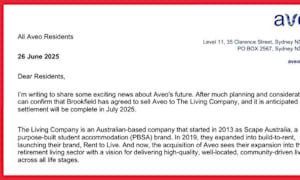Designing the future of residential aged care will require operators to be flexible – and think outside the box, according to Mahi Lau, Principal – Aged Care at Stanton Dahl Architects.
As discussed in the latest issue of SATURDAY, many operators put new developments on hold during the Aged Care Royal Commission and the COVID-19 pandemic.
15 months on from the Final Report – and with the pandemic still a threat – uncertainty remains for those that are designing new developments.
The Federal Government is currently consulting on a new Residential Aged Care Accommodation Framework which will provide guidelines for best practice aged care design, but these will not be in place until 1 July 2024 – two years from now.
“We have seen the entire residential care industry come to almost a standstill with the approach followed for so many years. The prospective resident is more aware of the possibilities and also of the limitations. It is an opportune moment for operators to re-analyse their care product, including their care models,” Mahi said.
Balancing resident care with operational costs
While many residential care operators are following through on the Royal Commission’s recommendation to take up the ‘small household’ model, the need to maintain financial viability means that these developments are being built within larger facilities – generally 140 beds or more.
“It’s not easy for smaller aged care providers to stack up their costs easily with the small household model,” said Mahi. “It is only when developments have 100-plus beds that they become operationally sound for providers.”
Post-Royal Commission and COVID, the widespread use of technology and ‘pandemic-proofing’ measures to separate non-essential staff from residents and reduce the spread of infection has become the norm.
“Everything from services to the ability to physically separate the wings or clusters including services if required, is now being built into the design,” said Mahi.
“Many providers realised the need for accommodation for staff during the pandemic,” she added. “So, some providers are building in additional storage that could be converted into overnight accommodation with almost no effort.”
Factoring your staff into the design
The other trend is towards features to improve staff wellbeing including dedicated recreation areas.
“We have some clients who are in very early design stages for recreation rooms with full access to the outdoors so staff can stretch their legs where needed,” said Mahi.
Looking forward, Mahi says operators will need to factor in flexibility in the design of spaces to adapt to the changing market.
“The shift towards the smaller household model can be costlier at the onset, similarly allowing ageing in place in retirement living will have a financial impact as far as the building ability is concerned. But this can be balanced operationally and is in fact proving beneficial to some of our providers already,” she explained.
“The increased costs can be adjusted by maximising site potential for instance, or by working with the provider to achieve a design that perfectly fits the care model. We recommend operators start the dialogue early on with the architect, to maximise the project benefits. Involving the builder early on, in what is called the ECI (Early Contractor Involvement) process, can also have a favourable impact on the costs and buildability.”
Read more in the Design and Architecture issue of SATURDAY – subscribe here for full access.











